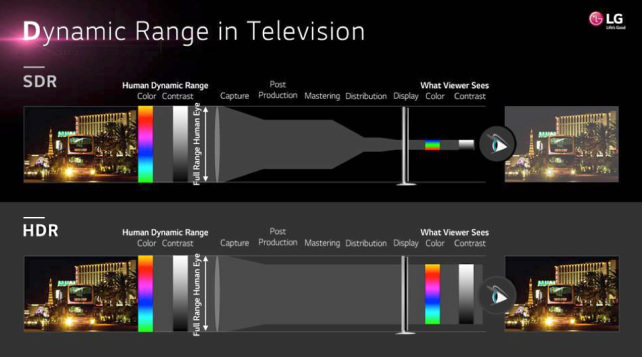![]() Market researcher Strategy Analytics forecasts High Dynamic Range (HDR) TVs will be in 100 million homes in the United States by 2020. This is a relatively quick adoption for this new technology, which is used by many companies as a step-up feature in their better sets.
Market researcher Strategy Analytics forecasts High Dynamic Range (HDR) TVs will be in 100 million homes in the United States by 2020. This is a relatively quick adoption for this new technology, which is used by many companies as a step-up feature in their better sets.
See more of the data predicting this rapid ramp-up of HDR TVs…
A new report from Strategy Analytics’ Intelligent Home Group now projects that sets featuring HDR technology, a key technology in Ultra HD TV, will sell at a rate of around 58 million units a year globally between now and 2020. If that rate in fact holds, the number of homes with HDR TVs will be at least 107 million here in the U.S.
At that pace, by 2020 HDR TVs would hold about 25% of the TV market here in the U.S.
“TV manufacturers like Samsung and LG are keen to maximize the revenue potential of this new technology,” says David Watkins, Director, Connected Home Devices at Strategy Analytics. “HDR can make a noticeable difference for most viewers so there is an opportunity to accelerate the TV upgrade cycle.”
HDR is Very Visible to Consumer
Many in the industry suggest that High Dynamic Range is very visible for TV shoppers and for this reason, demand is expected to rise. And this rise is anticipated even though HDR technology is only available in higher priced Ultra HD TV models.

Even though the HDR technology is new, certain programmers such as Netflix and Amazon have already begun incorporating it into their video services. According to the Strategy Analytics report, more broadcasters and pay TV companies are expected to join them over the next few years, which may also help stimulate demand for the sets.
Survey Shows Consumers are Confused
Despite an overall glowing report on the potential for HDR TVs, Strategy Analytics did discover that consumers are very confused about 4K TV and HDR TVs. In their survey, fully 15% of their respondents claim that Ultra HD TV services are available from their TV service…even though in reality, it is still rare. Another 8% claim that they have watched Ultra HD programs.
These figures are much higher than expected, given the relative rarity of Ultra HD programming. This suggests to Strategy Analytics analysts that consumers are clearly confused about Ultra HD TV.
“The TV industry has put a great deal of effort into establishing the next generation of TV technologies,” comments David Mercer, VP and Principal Analyst. “The challenge now is to communicate the benefits of these enhancements to viewers and to reduce the uncertainty which could stall growth of new services.”
See more about HDR, as well as other reports from Strategy Analytics at: www.strategyanalytics.com.




Leave a Reply